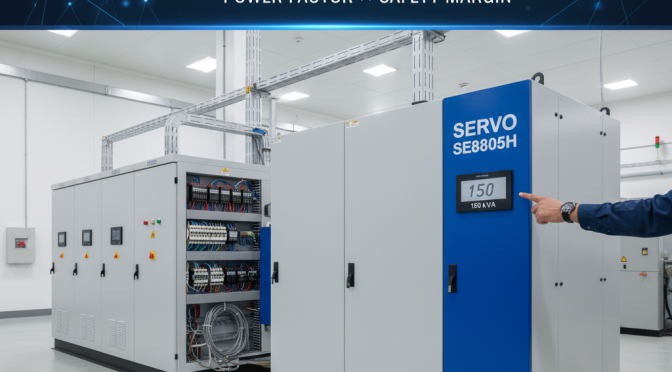Machines like CNC machines, MRI scanners, and elevators need steady and safe electricity to work properly. If the voltage goes up or down too much, it can damage the machine or make it stop suddenly.
That’s why we use a servo stabilizer — it keeps the voltage stable. But to get the best results, you must choose the right size of servo stabilizer.
In this guide by Servo Star, we’ll explain in very simple words how to find the correct servo stabilizer for CNC machines, MRI Scanners and elevators.
Why the Right Size Matters
Every machine uses a different amount of power.
For example:
- A CNC machine needs power for motors and tools.
- An MRI scanner needs very steady voltage for clear medical images.
- An elevator uses more current when it starts moving.
If the stabilizer is too small, it will get hot and fail to control voltage properly.
If it’s too big, you will end up spending more money than needed.
So, choosing the perfect Servo Stabilizer size helps you:
- Protect your costly machines
- Save electricity
- Avoid sudden breakdowns
Simple Formula to Find Stabilizer Size
You can easily calculate the size of a servo stabilizer using this formula:
Stabilizer Size (kVA) = Total Load (kW) ÷ Power Factor × Safety Margin
Let’s understand each step.
Step 1: Find the Load in kW
Check your machine’s nameplate or user manual.
For example:
- CNC machine = 22 kW
- MRI scanner = 75 kW
- Elevator = 15 kW
Step 2: Check Power Factor
Most industrial machines have a power factor of around 0.8.
Step 3: Divide Load by Power Factor
Now use the formula:
- CNC: 22 ÷ 0.8 = 27.5 kVA
- MRI: 75 ÷ 0.8 = 93.75 kVA
- Elevator: 15 ÷ 0.8 = 18.75 kVA
Step 4: Add a Safety Margin
Always keep an extra 10–20% margin for load increase or sudden power surges.
Final results:
- CNC Machine → about 30 kVA stabilizer
- MRI Scanner → about 100 kVA stabilizer
- Elevator → about 20–25 kVA stabilizer
Things to Check Before You Buy a Stabilizer
Before buying, keep these points in mind:
- Type of Machine:
Every load is different. CNC, MRI, and elevators all need different types of stabilizers. - Single Phase or Three Phase:
Most industries use three-phase stabilizers because machines need more power. - Input Voltage Range:
Make sure your stabilizer supports your area’s voltage range — for example, 340V to 480V. - Efficiency and Accuracy:
Choose stabilizers with more than 98% efficiency and ±1% voltage correction. - Brand and Warranty:
Always trust known brands like Servo Star, which offers reliable quality, service, and spare parts.
AVR vs Servo Stabilizer — Which One Should You Pick?
People often get confused between AVR and Servo Stabilizer.
Let’s make it simple:
- AVR (Automatic Voltage Regulator):
Works faster but is good for small devices like TVs, computers, and labs. - Servo Stabilizer:
Made for big and heavy machines like CNC, MRI, and elevators.
It uses a servo motor to correct voltage smoothly and accurately.
So, if you are running industries or hospitals, Servo Stabilizer is the better choice.
Final Words
Choosing the right size servo stabilizer helps your machines work safely and last longer.
Just remember the simple formula:
Stabilizer (kVA) = Total Load (kW) ÷ Power Factor × Safety Margin.
Whether it’s a 30 kVA stabilizer for CNC, a 100 kVA for MRI, or a 25 kVA for elevators, the right sizing ensures your machines perform perfectly — without wasting power or money.
Servo Star — India’s Trusted Name in Servo Stabilizers
At Servo Star, we manufacture high-quality servo voltage stabilizers for all industrial and medical needs.
Our products are built to protect your machines and give you peace of mind — every day, every time.













